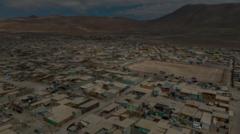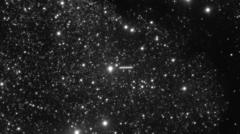Researchers at Universidad Mayor identify the potential of fog harvesting to provide a sustainable water source for marginalized urban communities in one of the world's driest regions.
Fog Harvesting: A Sustainable Solution for Arid Cities

Fog Harvesting: A Sustainable Solution for Arid Cities
New research suggests fog harvesting may be the answer to water scarcity in Chile's Alto Hospicio.
In a groundbreaking study, researchers from Universidad Mayor have highlighted how fog harvesting could potentially address the pressing water scarcity faced by arid urban areas like Alto Hospicio, Chile. With average annual rainfall measuring only 0.19 inches (5mm), this city struggles against severe water shortages, particularly in impoverished neighborhoods that rely heavily on trucked water deliveries. Dr. Virginia Carter Gamberini, the lead researcher, noted the city's compounded struggles with social issues like poverty and drug-related challenges.
The solution? Harnessing fog—a natural and underestimated water source. By employing a simple yet effective technique involving a fine mesh set between poles, the moisture-laden fog can condense into droplets that are then collected and channeled into storage tanks. This technique has seen implementation in rural regions across South and Central America, with one notable installation in Morocco.
Dr. Gamberini believes this technique could usher in a "new era" of large-scale fog harvesting, offering urban settings a more reliable and sustainable water solution. The research team conducted a thorough analysis of historical cloud formation patterns, leveraging satellite data and weather forecasts, ultimately revealing that the fog originating over the Pacific Ocean could provide significant water supplies to local slum areas.
Their findings were published in the journal Frontiers of Environmental Science, and indicate that with the appropriate setup of 17,000 square meters of mesh, around 300,000 liters of weekly water demand could be met—potentially replacing the current truck deliveries. Furthermore, as urbanization grows alongside climate concerns, this fog collection could prove essential for maintaining green spaces and encouraging hydroponic agriculture, with yields of up to 44 pounds (20 kilograms) of green vegetables monthly.
As Alto Hospicio sits adjacent to the Atacama Desert, known as the driest place on Earth, its overreliance on underground aquifers makes the need for alternative water sources urgent. Dr. Gamberini emphasized the unique geographical advantages of Chile, possessing both the Pacific's moist air and the cooling influence of surrounding mountains, presenting an opportunity unprecedented in many arid regions. The research team is in the process of creating a comprehensive "fog harvesting map" for Chile.
The implications are clear: harnessing "water from the clouds" could bolster urban resilience against climate change while also promoting equitable access to clean water for vulnerable populations.
The solution? Harnessing fog—a natural and underestimated water source. By employing a simple yet effective technique involving a fine mesh set between poles, the moisture-laden fog can condense into droplets that are then collected and channeled into storage tanks. This technique has seen implementation in rural regions across South and Central America, with one notable installation in Morocco.
Dr. Gamberini believes this technique could usher in a "new era" of large-scale fog harvesting, offering urban settings a more reliable and sustainable water solution. The research team conducted a thorough analysis of historical cloud formation patterns, leveraging satellite data and weather forecasts, ultimately revealing that the fog originating over the Pacific Ocean could provide significant water supplies to local slum areas.
Their findings were published in the journal Frontiers of Environmental Science, and indicate that with the appropriate setup of 17,000 square meters of mesh, around 300,000 liters of weekly water demand could be met—potentially replacing the current truck deliveries. Furthermore, as urbanization grows alongside climate concerns, this fog collection could prove essential for maintaining green spaces and encouraging hydroponic agriculture, with yields of up to 44 pounds (20 kilograms) of green vegetables monthly.
As Alto Hospicio sits adjacent to the Atacama Desert, known as the driest place on Earth, its overreliance on underground aquifers makes the need for alternative water sources urgent. Dr. Gamberini emphasized the unique geographical advantages of Chile, possessing both the Pacific's moist air and the cooling influence of surrounding mountains, presenting an opportunity unprecedented in many arid regions. The research team is in the process of creating a comprehensive "fog harvesting map" for Chile.
The implications are clear: harnessing "water from the clouds" could bolster urban resilience against climate change while also promoting equitable access to clean water for vulnerable populations.





















